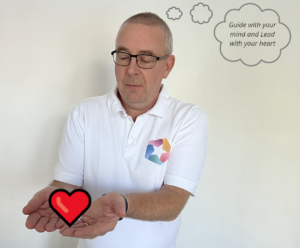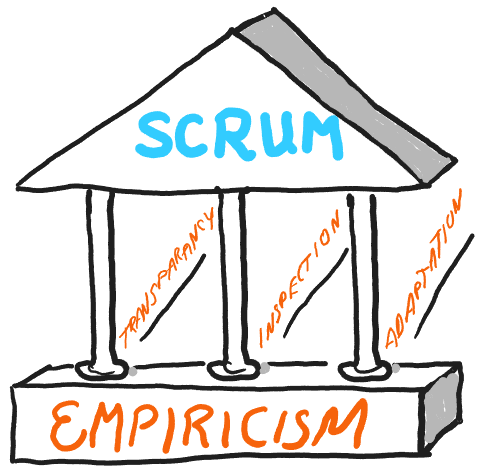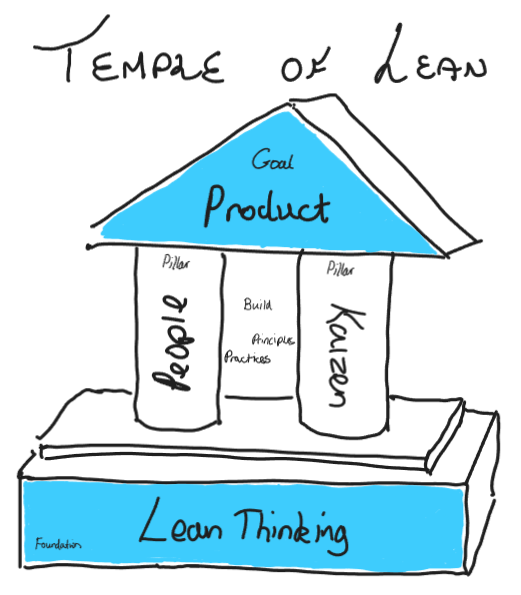
This series will take you through most of the essentials of the Scrum framework, I will dive into how it could be used better by applying the theory and principles.
It may help you and your teams with a better way of working, it may highlight some gaps for you and your teams. That’s my only true intention.
This third part is an “Overview” for this Better Scrum series, the Scrum Principles.
I hope you enjoy reading it as much as I had the pleasure writing and sharing it. All and any feedback is welcome and appreciated.
Scrum is a goal-based and people-driven framework. The hardest parts to get to grips with are the principles, let alone master.
Scrum is founded on Empiricism and Lean Thinking, that’s a good start, and there is also more to the principles than this initial surface statement.
Empiricism, also called Empirical Process Control, upholds Scrum to provide a better way of working, it asserts that knowledge comes from experience and decision-making is done on what is observed.
Scrum is represented in this Temple upheld by the three pillars of Empiricism
Transparency is making visible, and more importantly, having a common understanding to enable Inspection.
Inspection is looking at the situation, detecting undesirable variances or problems.
Adaptation is adjusting as soon as possible to minimize further deviation.
Inspection without Transparency is misleading and wasteful, Inspection without Adaptation is pointless.


The Temple of Lean is built on the foundations of Lean Thinking. The two pillars represent the System, these are People and Kaizen holding up the Goal crowning the temple, the Product.
There are 3 keys to success in Lean, these are Culture, Leaders, and People.
Inspire, Interact, and Innovate are the 3 I’s as foundational Values for Culture.
Leaders with the right VEST on, get commitment by Vision combined with goals, leading by Example, Self-development, and Transformation.
Engage, Enable, Enhance and Empower, the 4 E’s required for onboarding People to focus on the essentials and reduce waste.
If Scrum is without Culture, or without Leadership, or without People, it is not a useful framework for providing better outcomes and a better way of working, it is mechanical and just becomes another burden on an already heavyweight way of working.
Lean Thinking reduces waste and focuses on the essentials.
To be effective, this way of thinking is permanent, constant, and consistent for everyone, the spirit of Kaizen will inspect and adapt relentlessly improving and making better decisions at every needed moment to optimise the process faster.
For example, and to illustrate the opposite, piling up issues that generate waste may increase focus to do the work, here are some of the drawbacks:
– the detriment of waiting may outweigh the gains from doing the work
– a cumulation of too many optimisations in one go and clarity decreases on what actually caused improvement
– slows down the growing of the team
– demotivates by overloading with things put off
– generates further pain externally as debt reduces the ability to innovate
– will probably reduce the values and expected behaviours of all people involved
Not a pretty thought.
People applying Lean Thinking with the sprit of Kaizen will define and redefine additional shorter feedback loops optimizing the process.
Doing Scrum has no benefits, changing culture and fostering an environment where Scrum teams can be successful with motivated people is essential.
In Scrum, self-managing teams embody the 5 Scrum Values, Commitment, Focus, Openness, Respect and Courage. The 5 Scrum Values are a keystone defining behaviours for culture to be built on. Inspire with the Scrum Values, interact with people by upholding the Scrum Values, and innovate powered by the Scrum Values to deliver Value.
People and Leaders, shifting Culture to improve valuable outcomes, together.
Self-managing teams manage their own work on all product-related activities, this means they internally decide who does what, when, and how.
Self-management does not mean without management, although self-managing teams work better in an environment where they are empowered, boundaries still need to be set, and need to be inspected regularly to ensure they are not limiting the team and their capacity to deliver. The team’s maturity will enable the broadening of boundaries.
Self-managing teams like in Scrum, need leadership that care, serve, help grow, and remove obstacles in the organisation.
People and Leaders should learn to work together as a cohesive unit of cross-functional professionals, removing dependencies to enable the flow of value and satisfy customers. This is their combined Goal.
Scrum teams turn ideas into value with iterations that incrementally add to a product frequently, focusing on what is minimally necessary to provide value, and what is essential to build the thing right providing quality, maintainability, and adaptability.
Scrum enables a team to get value quickly into the hands of the Customer iteratively, the feedback from the Customer will guide the team ensuring they respond to change, align with what is desired to ensure they build the right thing, thus avoiding long periods without guidance.
This can be summed up as the journey of product discovery by embracing change and enabling Innovation.
Performance is not a goal of continuous improvement, nor is efficiency, even efficacy is not a goal albeit that Scrum defines a dedicated moment with the purpose to increase effectiveness and quality.
Scrum encourages teams to inspect and adapt regarding how things went, they identify the most helpful changes to improve effectiveness regarding individuals, interactions, processes, tools, and quality.
Scrum calls this moment the Sprint Retrospective. While this dedicated moment helps to increase focus on more important stuff outside of the Retrospective, continuous improvement is, well continuous, like every day with the spirit of Kaizen, all the time as problems will always surface while doing the work.
Teams that embrace continuous improvement do not wait for any dedicated moment like a religious ritual, they keep a close eye on their own measures which matter to them, they detect any deviations that occur and resolve them together as professionals without delay.
Measuring is the only evidence, the only truth.
Improving effectiveness can be measured, some examples to name a few, how many times did the team inspect and adapt, how frequent do they make improvement changes, are they increasing their success rate (success/try) or improving their time to market to get quicker feedback.
Continuous improvement is the goal, it’s about adapting to unexpected circumstances, learning by doing and being flexible focusing on quick decision-making to improve chances on meeting future expectations.
In essence trust is about people, if you are alone, only with reflection can you foster trusting yourself.
Back when I was a child, I was taught trust cannot be requested, cannot be forced, and cannot be expected. Trust can only be gained over time through one’s actions and can be lost easily in an instant. It is certainly one you cannot master alone as trust is an invisible force between people.
Scrum says that Empiricism and the Scrum Values help build trust, trust also improves the application of Empiricism and improves the behaviours with the Scrum Values.
Trust can only fully exist when there is psychological safety, not punishing or humiliating people for failure, not dramatizing failure, not throwing people out like broken down resources or deleting them as waste in the name of Lean.
When people are not afraid to lose their jobs, when people feel that others have their back, when they believe that experimenting is the fastest way to learn, to get faster feedback and feed forward, they will fail safely, learn quickly, and trust will flow from the heart becoming the invisible force as solid as the mountains they climb and overcome together.
The easiest description I have had that helps me remember the definition of a team was in my ICP-ACC training with the 3 C’s.
Individuals only cooperate, workgroups coordinate, and teams collaborate – as One, One collective mind focused on One objective, One at a time.
An industrial paradigm would resist for the sake of doing quantity before quality expecting that a well thought out futureproof architecture and design provides the quality intended allowing to drive individuals separately.
When I was a young developer at the age of 19, long before my agile days, I was slower than a lot of bright minded people, I took my time to do the job right at my speed.
It wasn’t about churning out lines of code like others and ending up with a mess that could only be 95% fixed, I could only 2 finger-type, I had to use my head and have conversations to understand the expectations and the goal.
The speed came naturally as I learned, but the quality of a working product that fitted the need was always first and foremost. I soon became a leader for guiding others and spent much time helping others succeed.
Leading is not just for managers or leaders, it is also a team skill, a leader’s first responsibility is to create more leaders. Scrum Masters are leaders, Product Owners are leaders, Developers are leaders, the team is leading forth together as One navigating uncertainty through discovery.
A better way of working is possible if you believe in the power of collaboration, the real fuel propelling a team.
To improve your walk, be consistent, be authentic, and most obviously… be you.
Self-awareness is a technique for fostering a better you, hold up the mirror and look deep inside on your happenings yesterday, were you behaving in a way that showed the true you, if not, you can take another step forward towards integrity, be brave and change for the better today.
Walking is a journey of learning. Start your journey, integrate, and apply more of the Scrum Values and Theory, maybe also go beyond the 4 Agile Values, and learn the 12 underpinning Principles.
Scrum Principles?
Scrum Principles lay down the foundations for a journey of fostering a living and organic way of working, a better way.
There is no end-state, the above only lays out some initial basics, there is infinitely much more to read elsewhere and dig deeper to play the game of Scrum better.
There is a better way of using the Scrum framework, the next part in this series will look at Scrum Rules.
There are always more emergent practices and better ways to work, that’s how we all learn, by sharing.
